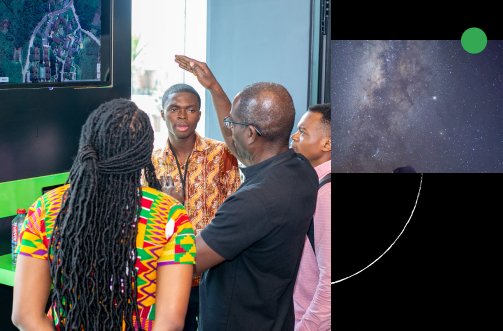
Mathias MJ Bellaiche
Research Areas
Authored Publications
Sort By
UWB Radar-based Heart Rate Monitoring: A Transfer Learning Approach
Elzbieta Gruzewska
Sebastien Baur
Matthew Baugh
Sharanya Srinivas
Matthew Thompson
Pramod Rudrapatna
Michael A. Sanchez
Lawrence Z. Cai
Timothy JA Chico
Robert F Storey
Emily Maz
Umesh Telang
Shravya Shetty
Mayank Daswani
arXiv (2025)
Preview abstract
Radar technology presents untapped potential for continuous, contactless, and passive heart rate monitoring via consumer electronics like mobile phones. However the variety of available radar systems and lack of standardization means that a large new paired dataset collection is required for each radar system. This study demonstrates transfer learning between frequency-modulated continuous wave (FMCW) and impulse-radio ultra-wideband (IR-UWB) radar systems, both increasingly integrated into consumer devices. FMCW radar utilizes a continuous chirp, while IR-UWB radar employs short pulses. Our mm-wave FMCW radar operated at 60 GHz with a 5.5 GHz bandwidth (2.7 cm resolution, 3 receiving antennas [Rx]), and our IR-UWB radar at 8 GHz with a 500 MHz bandwidth (30 cm resolution, 2 Rx). Using a novel 2D+1D ResNet architecture we achieved a mean absolute error (MAE) of 0.85 bpm and a mean absolute percentage error (MAPE) of 1.42% for heart rate monitoring with FMCW radar (N=119 participants, an average of 8 hours per participant). This model maintained performance (under 5 MAE/10% MAPE) across various body positions and heart rate ranges, with a 98.9% recall. We then fine-tuned a variant of this model, trained on single-antenna and single-range bin FMCW data, using a small (N=376, avg 6 minutes per participant) IR-UWB dataset. This transfer learning approach yielded a model with MAE 4.1 bpm and MAPE 6.3% (97.5% recall), a 25% MAE reduction over the IR-UWB baseline. This demonstration of transfer learning between radar systems for heart rate monitoring has the potential to accelerate its introduction into existing consumer devices.
View details
LLM-based Lossless Text Simplification and its Effect on User Comprehension and Cognitive Load
Theo Guidroz
Diego Ardila
Jimmy Li
Adam Mansour
Paul Jhun
Nina Gonzalez
Xiang Ji
Mike Sanchez
Sujay Kakarmath
Miguel Ángel Garrido
Faruk Ahmed
Divyansh Choudhary
Jay Hartford
Georgina Xu
Henry Serrano
Yifan Wang
Jeff Shaffer
Eric (Yifan) Cao
Sho Fujiwara
Peggy Bui
arXiv (2025)
Preview abstract
Information on the web, such as scientific publications and Wikipedia, often surpasses users' reading level. To help address this, we used a self-refinement approach to develop a LLM capability for minimally lossy text simplification. To validate our approach, we conducted a randomized study involving 4563 participants and 31 texts spanning 6 broad subject areas: PubMed (biomedical scientific articles), biology, law, finance, literature/philosophy, and aerospace/computer science. Participants were randomized to viewing original or simplified texts in a subject area, and answered multiple-choice questions (MCQs) that tested their comprehension of the text. The participants were also asked to provide qualitative feedback such as task difficulty. Our results indicate that participants who read the simplified text answered more MCQs correctly than their counterparts who read the original text (3.9% absolute increase, p<0.05). This gain was most striking with PubMed (14.6%), while more moderate gains were observed for finance (5.5%), aerospace/computer science (3.8%) domains, and legal (3.5%). Notably, the results were robust to whether participants could refer back to the text while answering MCQs. The absolute accuracy decreased by up to ~9% for both original and simplified setups where participants could not refer back to the text, but the ~4% overall improvement persisted. Finally, participants' self-reported perceived ease based on a simplified NASA Task Load Index was greater for those who read the simplified text (absolute change on a 5-point scale 0.33, p<0.05). This randomized study, involving an order of magnitude more participants than prior works, demonstrates the potential of LLMs to make complex information easier to understand. Our work aims to enable a broader audience to better learn and make use of expert knowledge available on the web, improving information accessibility.
View details
LLM-based Lossless Text Simplification and its Effect on User Comprehension and Mental Load
Theo Guidroz
Diego Ardila
Jimmy Li
Adam Mansour
Paul Jhun
Nina Gonzalez
Xiang Ji
Mike Sanchez
Sujay Kakarmath
Miguel Ángel Garrido
Faruk Ahmed
Divyansh Choudhary
Jay Hartford
Georgina Xu
Henry Serrano
Yifan Wang
Jeff Shaffer
Eric (Yifan) Cao
Sho Fujiwara
Peggy Bui
arXiv (2025)
Preview abstract
Information on the web, such as scientific publications and Wikipedia, often surpasses users' reading level. To help address this, we used a self-refinement approach to develop a LLM capability for minimally lossy text simplification. To validate our approach, we conducted a randomized study involving 4563 participants and 31 texts spanning 6 broad subject areas: PubMed (biomedical scientific articles), biology, law, finance, literature/philosophy, and aerospace/computer science. Participants were randomized to viewing original or simplified texts in a subject area, and answered multiple-choice questions (MCQs) that tested their comprehension of the text. The participants were also asked to provide qualitative feedback such as task difficulty. Our results indicate that participants who read the simplified text answered more MCQs correctly than their counterparts who read the original text (3.9% absolute increase, p<0.05). This gain was most striking with PubMed (14.6%), while more moderate gains were observed for finance (5.5%), aerospace/computer science (3.8%) domains, and legal (3.5%). Notably, the results were robust to whether participants could refer back to the text while answering MCQs. The absolute accuracy decreased by up to ~9% for both original and simplified setups where participants could not refer back to the text, but the ~4% overall improvement persisted. Finally, participants' self-reported perceived ease based on a simplified NASA Task Load Index was greater for those who read the simplified text (absolute change on a 5-point scale 0.33, p<0.05). This randomized study, involving an order of magnitude more participants than prior works, demonstrates the potential of LLMs to make complex information easier to understand. Our work aims to enable a broader audience to better learn and make use of expert knowledge available on the web, improving information accessibility.
View details
Automated LOINC Standardization Using Pre-trained Large Language Models
Eric Loreaux
Emma Chesley
Paul Gamble
Martin Seneviratne
Ming-Jun Chen
PMLR (2022), pp. 343-355
Preview abstract
Harmonization of local source concepts to standard clinical terminologies is a prerequisite for multi-center data aggregation and sharing. Challenges in automating the mapping process stem from the idiosyncratic source encoding schemes adopted by different health systems and the lack of large publicly available training data. In this study, we aim to develop a scalable and generalizable machine learning tool to facilitate standardizing laboratory observations to the Logical Observation Identifiers Names and Codes (LOINC). Specifically, we leverage the contextual embedding from pre-trained T5 models and propose a two-stage fine-tuning strategy based on contrastive learning to enable learning in a few-shot setting without manual feature engineering. Our method utilizes unlabeled general LOINC ontology and data augmentation to achieve impressive performance on retrieving the most relevant LOINC targets when limited amount of labeled data are available. We further show that our model generalizes well to unseen targets. Taken together, our approach shows great potential to reduce manual effort in LOINC standardization and can be easily extended to mapping other terminologies.
View details
